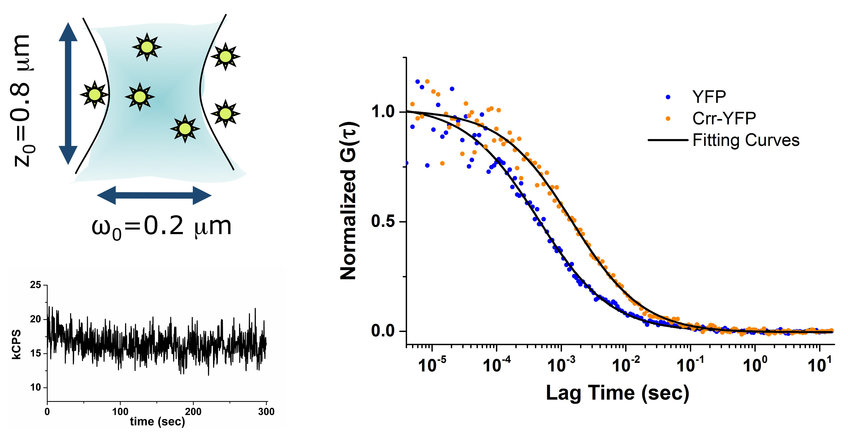Fluorescence Microscopy
The core facility focuses on live cell imaging and measurements of protein-protein interactions and protein diffusion with high spatial and temporal resolution. Each of our wide-field, confocal and super-resolution microscopes allow to acquire time-lapse movies up to several days. Cage incubators are available on each instrument to perform image acquisition at suitable temperatures.
The microscopes can be used, together with experienced staff or after extensive training, also for measuring protein-protein interactions and protein diffusion with advanced imaging approaches such as Förster Resonance Energy Transfer (FRET), Fluorescence Correlation Spectroscopy (FCS) and Fluorescence Recovery after Photobleaching (FRAP). Our instruments are optimized to measure FRET with several approaches: acceptor photobleaching FRET (also in automatic way in multi-well plates), ratiometric FRET (both at the single cell and population level) and fluorescence lifetime imaging FRET.

The distance-dependent Förster Resonance Energy Transfer is used for measuring protein-protein interactions. The figure shows examples of acceptor photobleaching measurements.
Here some examples of typical applications for each of our microscopes:
- The Nikon Ti-E widefield microscope is used for automatic multi-position imaging on multi-well plates, microfluidics and FRET applications. It guarantees excellent signal/noise even for bacterial cells with low fluorescence levels.
- The Zeiss LSM880 confocal microscope is used to acquire optical sections (z stacks), particularly for bacterial biofilms, for spectral imaging and for FCS, FRAP, FRET-FLIM.
- The Zeiss Elyra7, structured illumination microscope (SIM) is the latest acquisition of the core facility. It is based on the Lattice SIM approach and combines super-resolution (120 nm for xy and 300 nm for z) with extremely high sensitivity, making it the ideal super-resolution microscope for live cell imaging.

FCS, a fluorescence fluctuations based approach, measures the diffusion of fluorescent fusions in living E. coli cells.
Several groups in the institute are equipped with both basic and advanced microscopes. The list and the contact persons are available under the section “Service/Technology Portal/Microscopy”.

